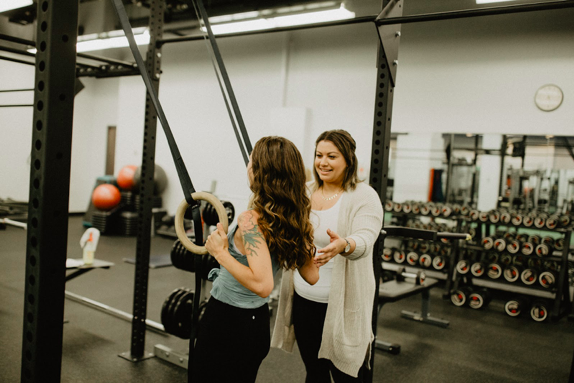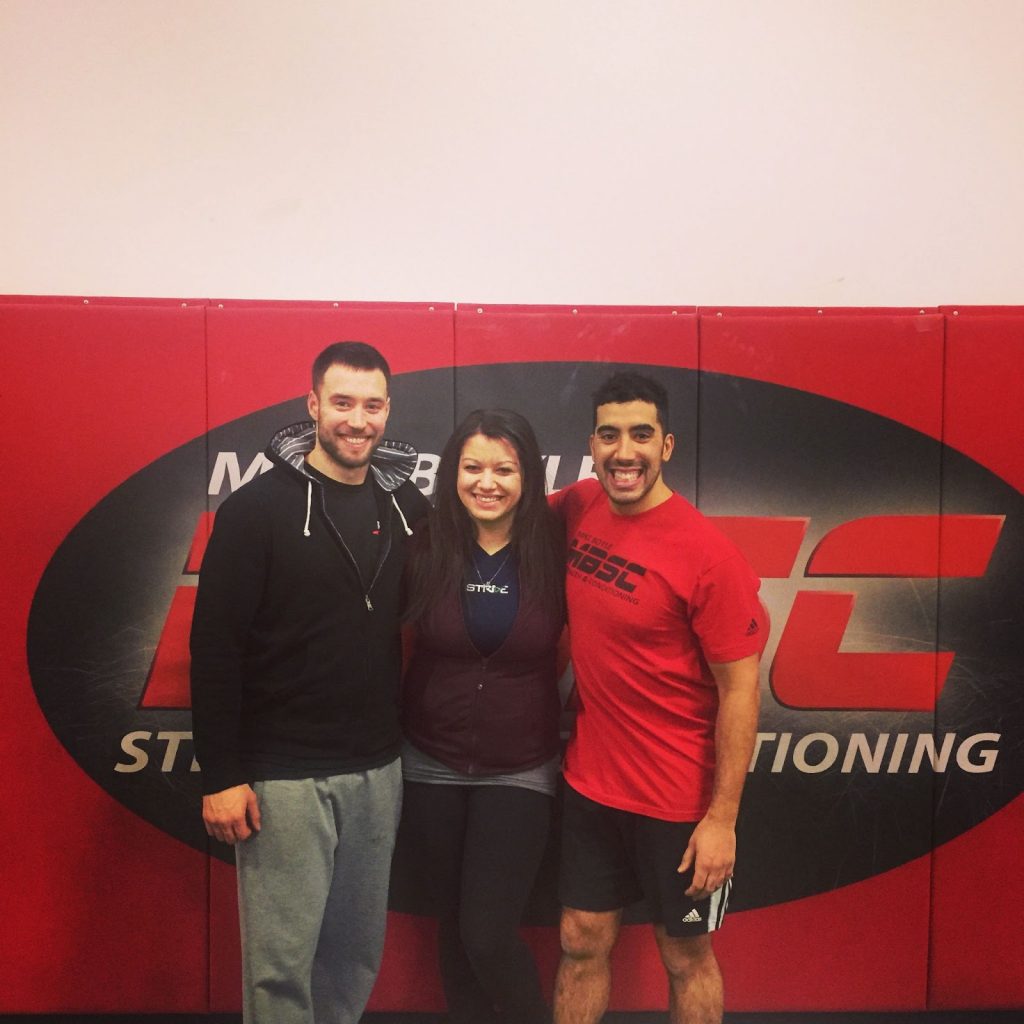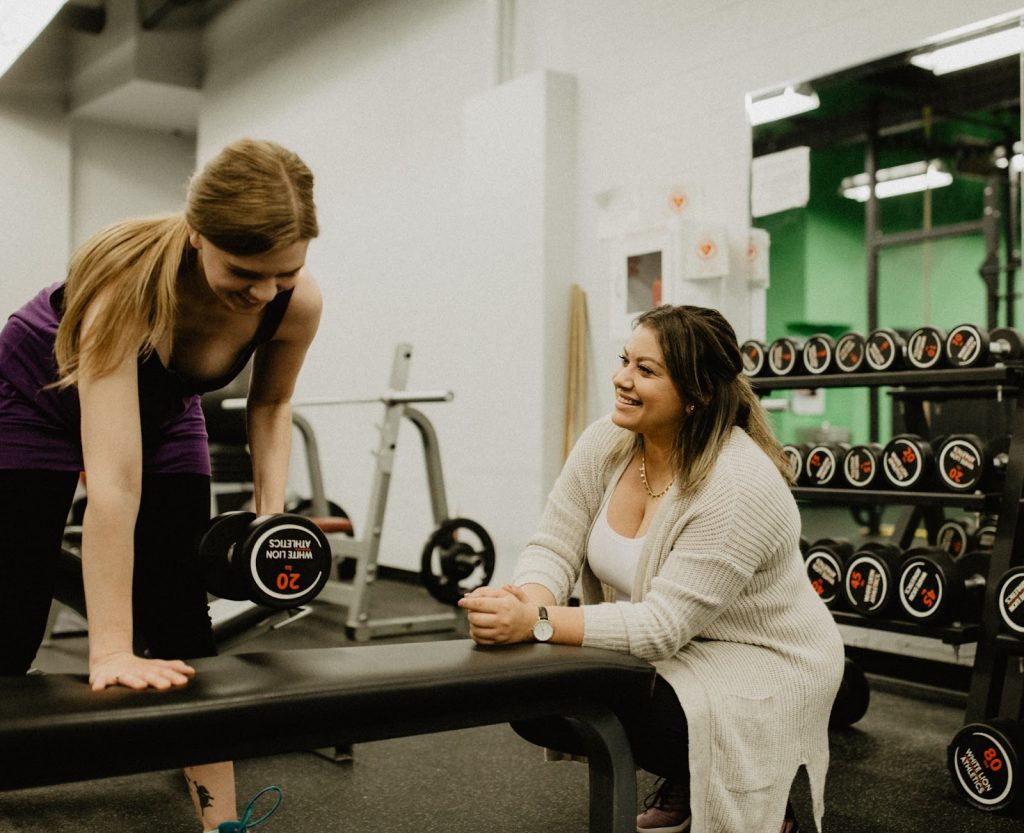5 things Therapists can learn from Coaches
This is a Guest Article written by Megan Pomarensky…
Therapists have a lot to learn from coaches.
The disconnect between therapy and training is HUGE.
Strength coaches are in a unique position. Clients often actively seeking them out, to push them closer to their goals, wanting to try new things, and to do all the heavy lifting.
While therapists are often in the clinic…working on the treatment table, with some corrective exercises tossed in there, and clients peacing out once their pain is gone (not necessarily when strength is maxed out).
…Likely because there’s minimal strength training included in our clinical educations, and instead, a huge focus on finding all the things that are wrong with someone, picking apart so-called dysfunctions, and using our hands to fix people.
So that gap between these two scenarios?
Super wide.
And unfortunately, not a shock.
As a young athletic therapist working in a clinic-gym hybrid, I frequently saw the differences in how clients interacted in the clinic doing rehab, versus in the gym with the strength coaches training for performance goals and/or health.

Rehab = fearful.
Training = hopeful.
It wasn’t that surprising though, considering what happens in so many rehab sessions, regardless of the profession. As one of my mentors often says…clinicians have gotten great at “keeping clients in rehab purgatory…and managed away from load”.
It’s more common to see over-correcting on form and long lists of restrictions (which turns into over-protecting and unfortunately instills fear) than it is to see positive experiences with movement being created (with ways to make the list of things people can do longer than the things they can’t do).
Sessions are often framed about what we can do with manual therapy and modalities, tossing in some exercises at the end to supplement the care we provided, inadvertently creating reliance (instead of active care driving the client session and empowering them).
There’s typically a lot of floor based-exercises and bands being tossed around, and teaching people to breathe and move better (…what is “better” anyways?)
So you’re seeing what’s happening, right?
Fast forward to the past couple of years. A big reason my rehab practice has been successful is because I found a way to close that gap that I mentioned earlier (and that way wasn’t just more therapy skills and pain neurophysiology education, as much as I do love those things!)

- I shadowed at MBSC.
- I took the CFSC cert.
- I learned from high performance coaches in strength training, speed/agility, olympic lifting, kettlebell training and more.
- I spent just as much time with coaches, as I did with other therapists.
And I learned a LOT from those experiences, and am pumped to share them. Here are my top 5 things therapists can learn from coaches, that you can use to level-up your rehab:
- Don’t be scared of load.
Graded exposure – a rehab key – doesn’t stop at exercise bands or 20 lb weights. If there’s no pathophysiological reason restricting things (and unless there’s acute injury, there likely isn’t…), we can safely load people up. If the goal of rehab is to recover and prevent further injury, the capacity of the area needs to be loaded beyond how it was injured (or potentially could be injured). And the best way to do that, is in the gym. If it’s ok to work hard enough to feel uncomfortable and sore during or after a workout, why can’t it be framed the same way and done in rehab too?
- Less is more.
Explaining the load-deformation curve, the anatomy of the hips and pelvis, and yelling “knees out” or “squeeze your shoulder blades” louder, doesn’t get anyone anywhere.
So I’m talking less cues. Less fancy tricks and tools. Talking like a human to a human, not reciting passages from a textbook.
Clients want efficiency. Not fluff and filler exercises (or all the heat and modalities and add-ons – especially if it’s not actually doing anything specific).
Creating the right environment – one that allows the client to move safely, gets them feeling the target tissue, seeing change in their symptoms, and is a positive experience, is all that’s really needed.
- Overprepare
A solid progression/regression/lateralization sheet is going to change the game.
It doesn’t mean rehab will be less personalized.
It doesn’t mean you’ll be tied to a checklist or protocol.
It simply means you will be more prepared and less stressed when a particular exercise you think is going to work, doesn’t. Because something else hurts…they don’t have that equipment…it’s too easy…it’s too hard…they don’t like that exercise…it brings up fear or other emotions…or one of a million other reasons.

- Say “yes” more than “no”.
Injury and pain sucks. But it’s possible to keep clients in the gym, and more importantly, in life! So if the list of things a client can’t do, is longer than the things they can do, there’s a problem. Whether training the client myself, or tag-teaming with a strength coach, it’s very easy to make things work in the gym. We’ve got the non-injured limb, and the rest of the body. We’ve got exercises broken down into categories (shout out CFSC) that make sense (acute knee pain? Pick from the hip dominant list instead of the knee dominant list. Irritated shoulder? Stick to horizontal push/pulls instead of vertical). The possibilities are limitless.
- Flip the script.
Make the focus active care, with manual therapy and modalities being supplemental. Give the client the power to help themselves.
Show them autonomy. Teach them to understand when therapy is indicated and how/why you could help. Guide them to recognize hurt versus harm and other different sensations. Explain when and how to work through things on their own. Empower them.
While learning these 5 things did shift rehab into being more like training for my clients and I, it’s only a drop in the bucket. I encourage you to take these into consideration, while talking to more strength coaches on a regular basis, and really diving into the strength training world. That information, combined with the clinical assessment and pathophys knowledge you already have, is what’s going to change the game and improve client experience and outcomes.
If you want to chat about this (or more!) hit me up through IG or here…i’m always happy to chat!

Megan Pomarensky is a Certified Athletic Therapist, a Certified Functional Strength Coach and a Certified Vinyasa Yoga Instructor with a Master’s Degree in Rehabilitation Science.
Over the past 8 years, Megan has built a successful private clinical practice working with clients from professional athletes looking to improve performance to older adults with chronic pain, and everyone in between. Her mission is to empower every client to better understand their body and make informed decisions about their care.
She also helps athletic therapists, trainers and physiotherapists get out of the textbooks, protocols and checklists for better client results.
IG/Twitter @meganpomarensky